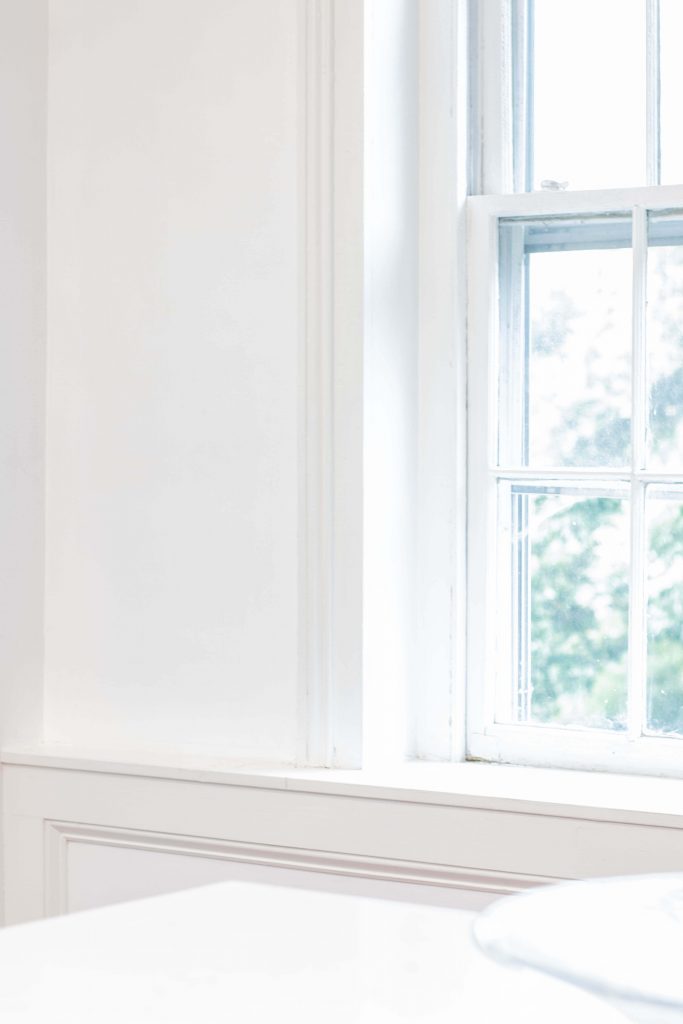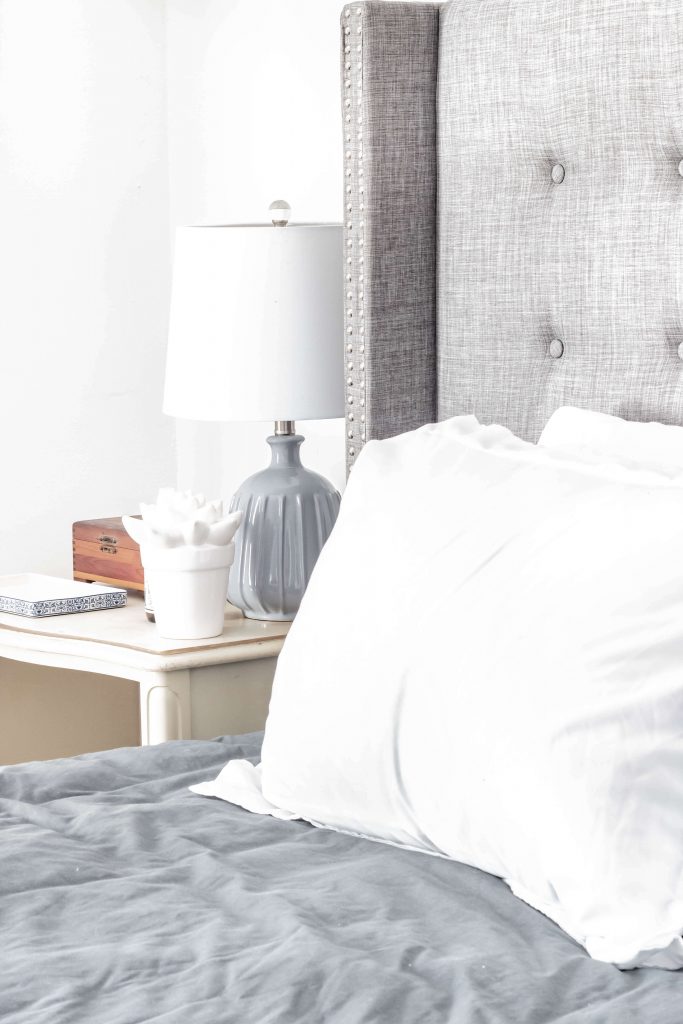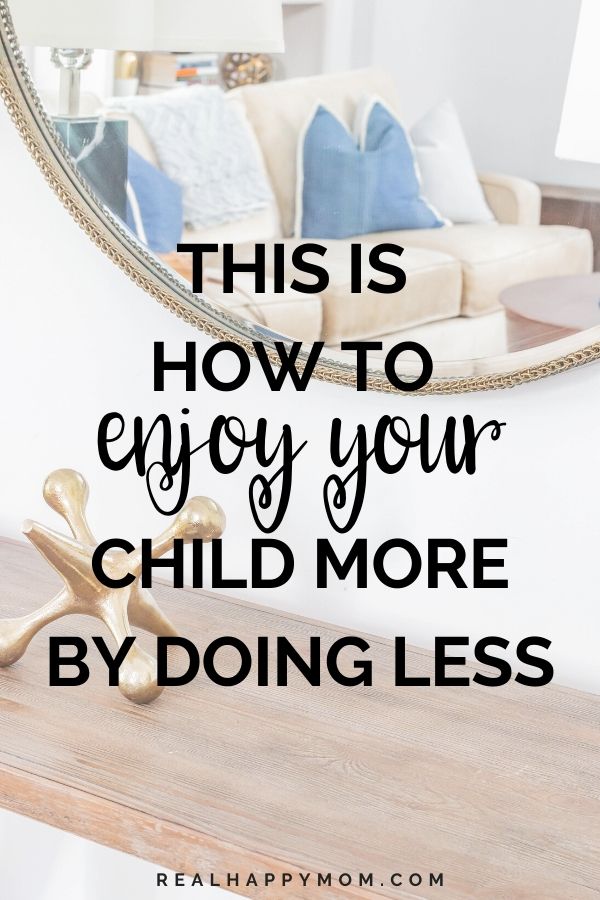Do you ever find yourself struggling with an abundance of toys or trying to figure out activities for your child?
It’s easy to get overwhelmed, but the truth is it doesn’t have to be complicated.
In this episode of the Real Happy Mom Podcast, my guest shows how to enjoy your child more by doing less.
Listen to the full episode above or check out the post below.
This post contains affiliate links. This means I will make a commission at no cost to you if you make a purchase using the links.
About Jenny
Jenny is a journalist and mother that teaches about parenting from a different angle.
Jenny has taken time to research and find parenting practices that allow parents and children to have more peace.
By looking at history, Jenny has found basic principles for parenting that allow parents to do less and enjoy their child more.
Evolution of parenting
Humans have evolved over the last 200,000 years without toys, without any stores that had toys, or Pinterest that had activities for kiddos.
We have thrived without toys.
So when did this need for toys start?
When Jenny looks back on her research, she finds that at the start of the industrial revolution is when toys became available.
Jenny also notes that happiness started to decrease at the same time as well.
This is also around the time that many parenting books came out that encouraged self-soothing and the thought that children need to be ignored so that you don’t spoil them.
And so in place of that, we actually stopped honoring the most important thing that a child needs, which is a secure attachment to their parent or to their primary caregiver.
And we started to give them toys and materials in place of that, which is the lousiest replacement.

An Alternative Parenting Style
Jenny has been working hard to let parents know that you don’t have to stress yourself with purchasing toys and finding activities for your kids.
News flash. Jenny doesn’t set up any activities for her daughter. And her daughter is learning and having fun every day.
What she does is utilize RIE parenting. RIE parenting stands for Respectful Infant Educarer Parenting.
RIE Parenting was created by Magda Gerber in the 1980s but was inspired by a Hungarian pediatrician, Emmi Pikler.
He observed children thrive when they just played freely and unstructured in their environment.
He also found that kids learn casually, not testing by testing.
Children were learning their alphabet by singing songs versus testing them with posters on the wall.
So if we look inside of our houses, we have measuring cups. Those are stacking toys, right?
And most of the things we see on Pinterest, putting balls in the holes, stacking color, sorting, all of these things.
But our natural environment gives us those opportunities for free every day without ever getting to buy a toy and without ever needing to set up an activity.
Our natural environment gives children toys and the opportunity to play without setting up activities or buying toys.
All you need to do is allow your children to explore the world freely. This means that you can enable them to play with the pots in the kitchen or paper in your office.
All you have to do is sit back and watch your child do their magic with the things around them.

Children are competent
Our bodies naturally know what’s safe and what isn’t.
Unfortunately, with many parenting styles, this instinct is dulled.
This happens when a child is repeatedly over time told that something is not safe, and we don’t allow them to explore it.
As a result, the child doesn’t trust their intuition.
The Continuum Concept
In the book, The Continuum Concept, the author, Jean Liedloff, was able to live with a tribe for two years and made observations and then wrote the book.
She noticed that there weren’t any tantrums, terrible twos, or sibling rivalry.
You know — all of the things that we struggle with so much in modern society.
The author started compiling what the parents were doing and not doing.
One of the things that she noted was up until the time a baby could crawl, they’re in their mother’s arms.
The mothers carry them in a baby carrier for the first six months of life or until they can crawl.
So that entire time they’re up at adult eye level, they’re understanding how conversations work, seeing how the mother works and goes about their daily work.
Mostly they are learning how the world works.
Then after the child can crawl, they’re put down on the floor, and they start to go along with their mother about the day as she works.
They’re crawling around her feet, and they start to play with everything, including the big machetes.
The kids would pick them up and never hurt themselves because they knew it was delicate — the same thing with fires.
I will be honest. My first instinct is to remove my child from anything hot.
But the children instinctively knew that the fire was hot because they could feel the heat on their body as they got closer.
The author recommended after her observation that parents needed to sit back and quietly and lovingly observe their child.
By doing this, your trust will build in them, and their confidence will grow in themselves. Children are capable of doing more than we think.

Capable of using a sharp knife
For instance, Jenny started her daughter with a knife at 15 months old.
She allowed her to use a crinkle knife. The knives used to cut crinkle fries that is stainless steel and has a handle on top.
This knife allows her daughter to learn how to use a knife.
Then by 20 months, her daughter was chopping carrots, banana, and broccoli.
Don’t believe me? Check out Jenny’s Instagram page.
Now Jenny’s daughter is 28 months and is using a serrated knife and doesn’t cut herself.
Now, if you are like me and aren’t ready to let your little one hold a sharp knife, you can start with a nylon knife.
Your child can cut through cucumbers and zucchini without you needing to watch them.

The difference between child-friendly home and childproofed home
How many times have you walked into your house with the kids and allowed your kids to go free without the feeling that you need to run behind them to make sure that they don’t get into something or do something unsafe?
It’s tough to have peace in your home when you can’t allow your child to be free.
You deserve to be able to walk into your home and have time to decompress without worrying about your little one.
By having a child-friendly home, you can do this. This is different from childproofing.
Childproofing your home involves modifications so that your child is less likely to injure themselves.
Jenny learned about setting up a child-friendly home on the Montessori Notebook. Here are a few steps to get you started.

Setting up a child-friendly home
First, get down at the eye level of your child.
Experience what the home looks like from their level. You can start to see that there is not much going at their level.
Start by bringing enriching things to their eye level by adding artwork.
Instead of strapping your child in a high chair, try using a weaning table.
As soon as your child can sit up, you can start them in this chair.
Your child can quickly get in and out of the chair without your assistance.
You want to avoid strapping your child in because, as Jenny explains, it is the kind of basic respect never to strap someone into something and make them feel like they can get out.
Of course, we need to strap our kids in the car seat when we are driving, but at home, avoid strapping your child into a chair.
Next, try to get child-size furniture. You don’t have to go out and buy new furniture for your child.
But make amendments to the furniture that you do have. You can cut the legs off of chairs.
Instead of using a playpen, use a baby gate in front of doors, you don’t want your child going through like the front door, for instance.
Instead of locking the kitchen cabinets, take out anything toxic and replace it with non-toxic products so that your child can roam freely in the kitchen.
So instead of making underneath the kitchen sink the place for products, you know, I have a small squirt bottle filled with water for her in it and a little rag so she can open underneath the cabinet and she can spray the floor and clean the floor or clean her table.

Risky Play
How many times have you seen your child playing, and you know that they could do something to get hurt?
Our immediate reaction is to prevent our kids from getting hurt. But Jenny shares that there is a need for risky play.
There are so many studies on what is called in the child development world risky play and the importance of it.
Actually, the earlier we allow risky plays, this is playing with knives, climbing up on high structures, falling over, the more capable their body is going to be.
So the more that we shield them from risky play and trying things, actually the opposite happens.
The more you shield your child, the more fear they will develop in their adult life and the more anxiety they suffer from as adolescents.
Next time, instead of stopping your little one from climbing on the sofa, let them go. You might be surprised at how well they do.

Doing less, but modeling good use of electronics
I will admit, I am on my devices a lot. Between the blog and trying to keep up with social media, I spend a great deal of time on my phone and laptop.
I talked to Jenny about how I could help make sure that my kids didn’t end device junkies.
So the first thing to ask ourselves is what do we want?
How do we want our children to use technology?
What would make you comfortable?
What are your boundaries with your child?
How frequently do you want them on a device?
What do you want them doing on a device?
And then you can kind of make your own boundaries based on that.
If it makes you uncomfortable that your child is on the computer for an extended length of time, it’s time to designate times that your child can be on the computer or their tablet.
Tablets and laptops are handy tools, but we don’t want our kids addicted to devices.
One helpful thing is to talk to your child about what you are doing on your device while you are using it.
For instance, the next time you are looking up a recipe to cook for dinner, read the method out loud. Or when you are trying to get directions to a party, you can show your kids how you are using your phone to get directions to your destination.
Jenny does this when she is writing a blog post.
I’ll say, I just wrote this blog here and this is my work that I do. I get to educate about respecting babies and children and so now so people can read it. I’m going to type it into the computer. So I’ll be right here doing that. While you’re playing and then I’ll be finished soon.
You want to make sure that you are modeling the behavior and habits you want your child to heave.
Did you love these tips from Jenny on how to enjoy your child more by doing less? Let me know in the comments what you think about this parenting technique.
Check out everything Jenny is doing, and to learn how you can incorporate RIE parenting, follow her on Instagram.

Subscribe & Review in iTunes
Have you subscribed to the Real Happy Mom podcast? If not, I’m encouraging you to do it today.
I don’t want you to miss any upcoming episodes. I am planning on adding some bonus episodes that you won’t find on this website, and if you’re not subscribed, you might miss out on those. Click here to subscribe in iTunes!
I would be so happy and grateful if you left me a review on iTunes too. Reviews help iTunes to know that this is a podcast for other moms so that other moms can find this podcast. Plus, it makes my day to read the reviews.
Just click here to review, select “Ratings and Reviews” and “Write a Review” and let me know what your favorite part of the podcast is. Thanks in advance!
Don’t have iTunes? You can subscribe to the podcast Google Podcast, Anchor, Spotify, Breaker, Castbox, Overcast, RadioPublic, and Stitcher.
Links Mentioned
- The Continuum Concept- Jean Liedloff
- Crinkle Knife
- Nylon Knife
- The Montessori Notebook
- RIE Parenting Risky Play
- Unconditional Parenting – Alfie Kohn
- Jenny on Instagram
Additional Resources
- Free Play Instead of Structured Play
- Toddler Knife progression
- Jenny’s 20-month old chopping
- The Continuum Concept
- Setting up a Child-Friendly Home
- The Importance of Risky Play
- Helping Kids Succeed at the Playground
- Unconditional Parenting

[…] This is How to Enjoy Your Child More By Doing Less […]